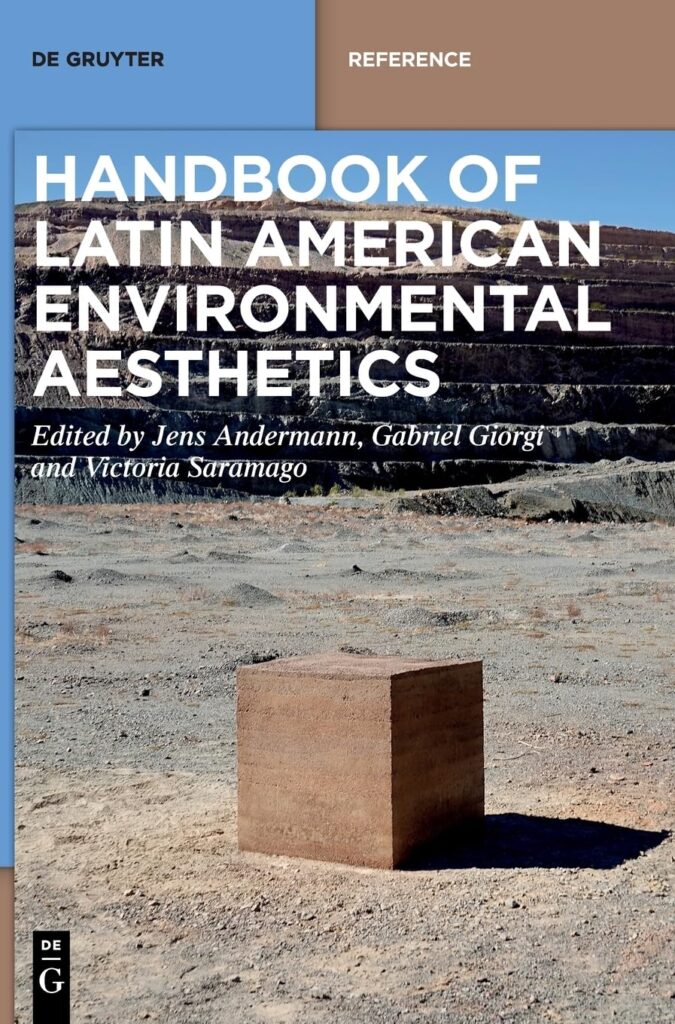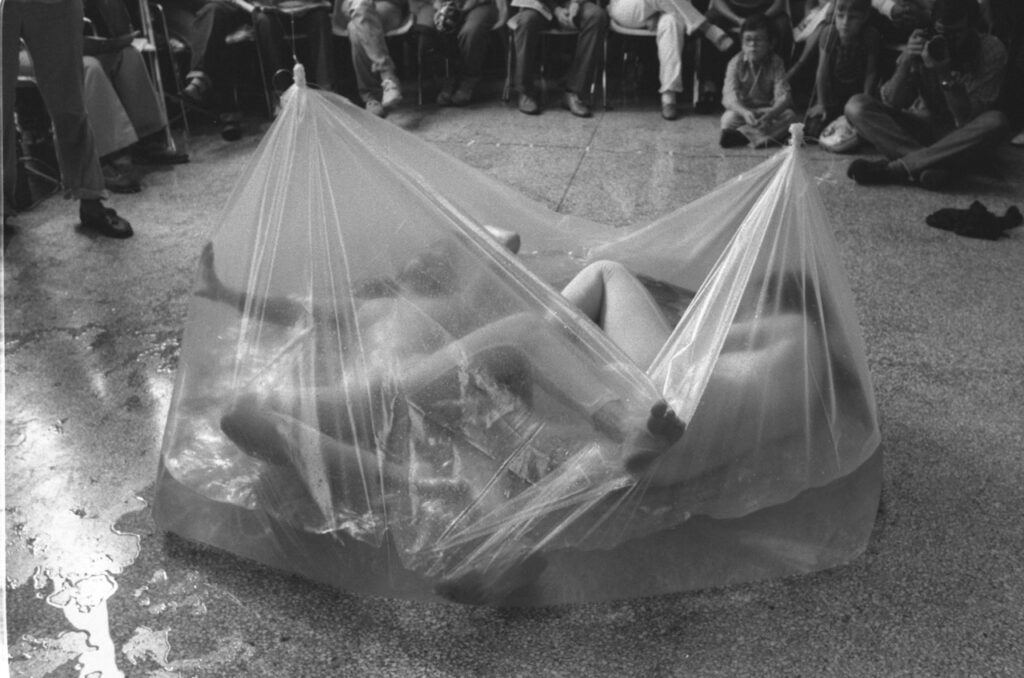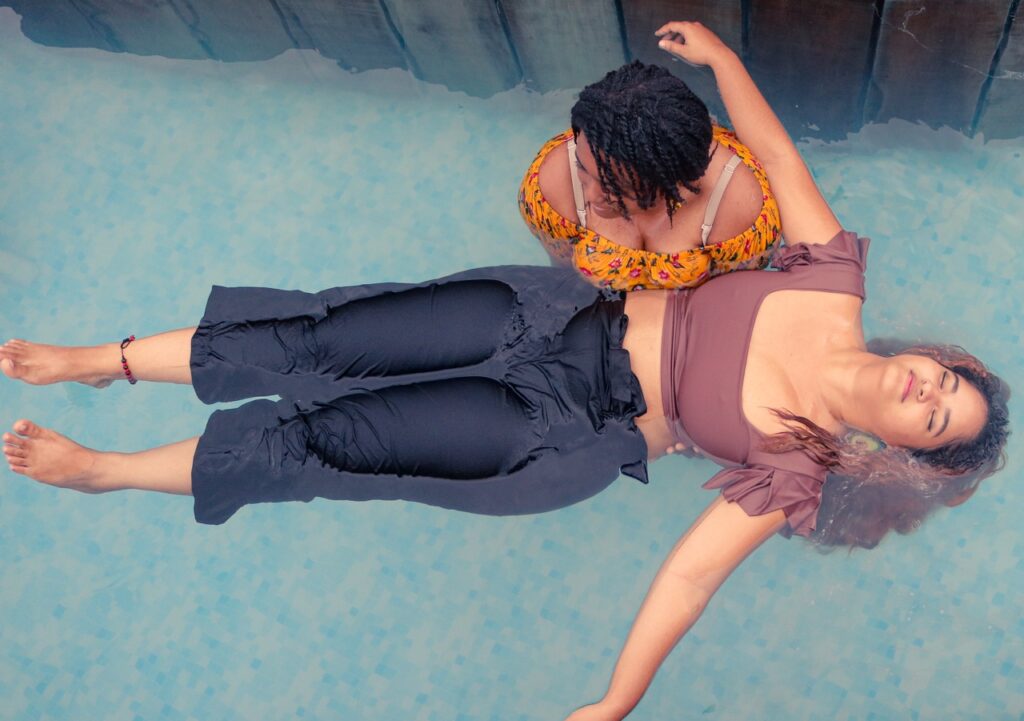
Lisa Blackmore, “Water,” in Jens Andermann, Gabriel Giorgi and Victoria Saramago, eds, Handbook of Latin American Environmental Aesthetics. Berlin: De Gruyter, 2023, pp.421-438.
The Handbook of Latin American Environmental Aesthetics offers a comprehensive overview of Latin American aesthetic and conceptual production addressing the more-than-human environment at the intersection between art, activism, and critique. Fields include literature, performance, film, and other audiovisual media as well as their interactions with community activisms. Scholars who have helped establish environmental approaches in the field as well as emergent critical voices revisit key concepts such as ecocriticism, (post-)extractivism, and multinaturalism, while opening new avenues of dialogue with areas including critical race theory and ethnicity, energy humanities, queer-*trans studies, and infrastructure studies, among others. This volume both traces these genealogies and maps out key positions in this increasingly central field of Latin Americanism, at the same time as they relate it to the environmental humanities at large.
By showing how artistic and literary productions illuminate critical zones of environmental thought, articulating urgent social and material issues with cultural archives, historical approaches and conceptual interventions, this volume offers cutting-edge critical tools for approaching literature and the arts from new angles that call into question the nature/culture boundary.
Abstract – “Water”
Environmental Aesthetics proposes the analysis of physical landscapes and their mediation in cultural production as two intertwined threads that further our understanding of socioecological worlds. This chapter takes up that task in relation to liquid environments and water-related art. The first part explores territories, infrastructures, and systems of flow as “objects of appreciation” (Fisher 2005, 667) in their own right, whose aesthetic formations bespeak long histories of human relations to water and their related political ecological contexts. I refer to these as “hydrocultural formations,” that is, material aesthetic forms produced by human and non-human forces. Attending to physical environments of more-than-human water cycles reaffirms what scientists have long known about bodies of water: they exert their own aesthetic agency as active flows that move, sound, and sculpt other material bodies to create territories and thus challenge anthropocentric humanist paradigms of cultural criticism (Blackmore 2022). The aesthetic contours of hydrocultural formations are important to consider since they cipher the actions of waterbodies themselves and the impacts of historical contexts, contemporary socioeconomic dynamics, and ongoing struggles. The discussion below maps broad hydrological, hydropolitical, hydraulic, and climatic energies that shape aquatic environments in the region, and examines paradigmatic hydrocultural formations entangled in “the wider process of rationalization, state formation, and the emergence of ‘technoscience’” (Gandy 2014, 3) and in active claims for socioenvironmental and cognitive justice for “epistemologies of the South” (De Sousa Santos 2014; Escobar 2016).
The second part of the chapter identifies aesthetic currents in artworks that invent channels to sense flows of more-than-human water cycles across multiple scales and registers, from the bodily to the infrastructural, the sacred to the contaminated. In material and metaphorical terms, water is much more than a chemical compound; its fluid forms interact with other matter in “liquid ecologies” that are “host to turbid histories of capital flows, philosophical currents, aesthetic traditions and residual traumas that connect distinct spaces, times and bodies” (Blackmore and Gómez 2020, 2). Liquidity and fluidity are thus also figures of thought for thinking beyond conventional and dominant epistemologies and aesthetics. Modes of hydraulic and turbulent flows have long been inspiration to writers and artists in Latin America (Pettinaroli and Mutis 2013) as well as scholars in the “hydrohumanities” (De Wolff, Faletti and López Calvo 2022). By identifying and analyzing key figures and dynamics in a select corpus, I chart how artists mediate the “interpermeations” (Neimanis 2016), “contact zones” (Pratt 1991) and modes of fast and “slow violence” (Nixon 2013) inherent in the Latin American hydrosphere, and explore how artworks imagine alternate water cultures and hydrocommunities engaged in speculative “ethics of care” (Puig de la Bellacasa 2017), and socioecological and cognitive reparation.



